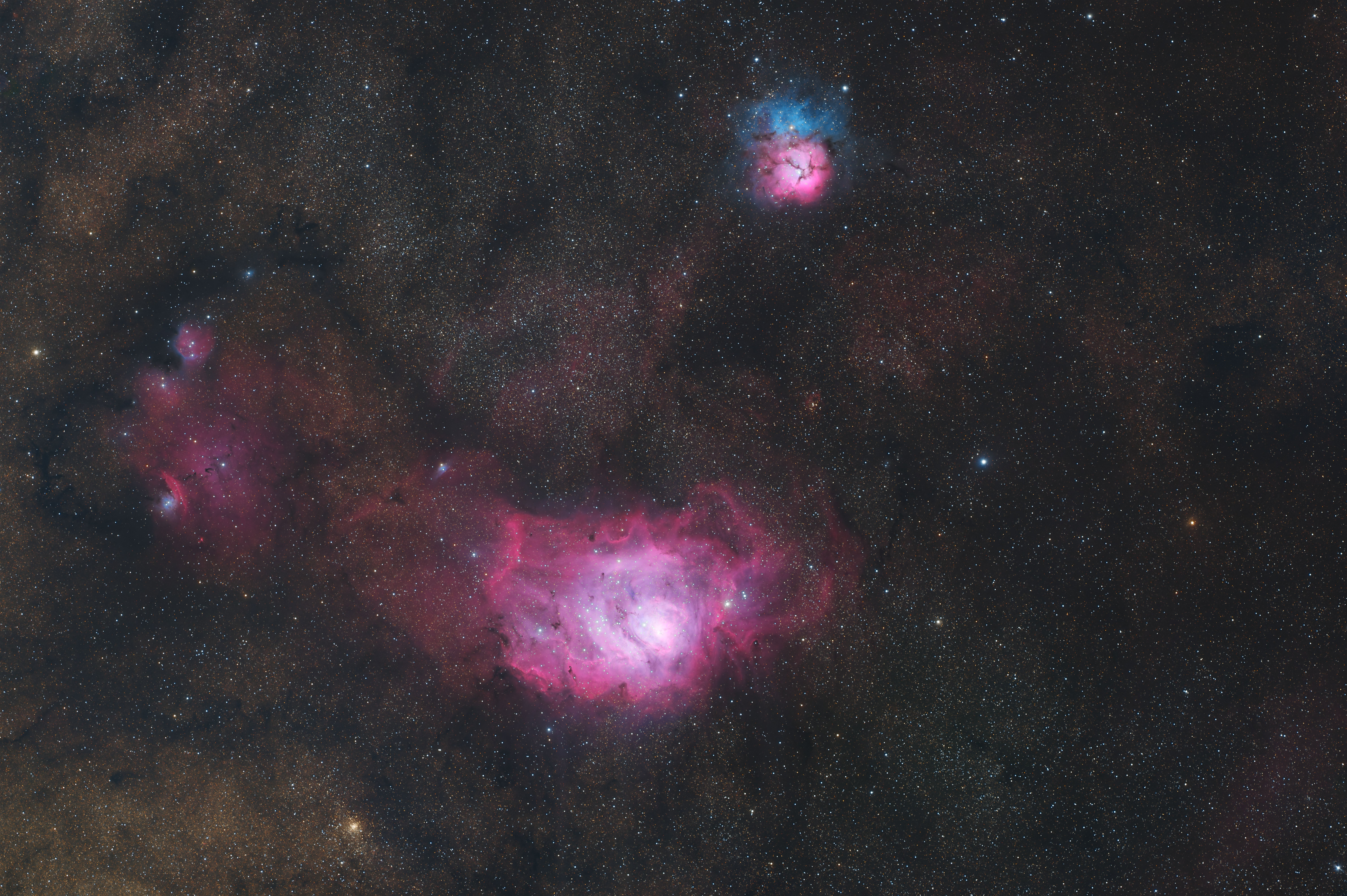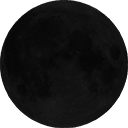Lagoon & Trifid Nebulae adorn the region of Sagittarius constellation with its glowing and reflecting giant interstellar clouds of star-forming regions. These are very to spot in southern skies on a clear summer evening.
Seen in the picture are the following components of the complex:
- M8 or Lagoon Nebula: The glowing emission nebula (pink clouds) of rich star-forming region.
- NGC 6530: Open Cluster within active star forming region inside Lagoon Nebula.
- M20 or Trifid Nebula: Combination of reflection (blue) and emission (pink) nebula with dark trident shaped dust lanes.
Lagoon Nebula (M8):
The Lagoon Nebula is visible to the naked eye from Earth. M8 is situated in the Sagittarius constellation and is positioned near the center of our Milky Way galaxy. Its location provides astronomers with a valuable opportunity to study star formation and the interstellar medium in a region with high stellar density.
The Lagoon Nebula is a giant interstellar cloud of gas and dust, and it is an active region of star formation. The nebula contains young, hot stars that are responsible for illuminating and shaping the surrounding gas clouds.
The Lagoon Nebula has been extensively studied across various wavelengths, including visible, infrared, and radio. Observations from space telescopes like the Spitzer, Hubble Space Telescope and ground-based observatories have provided detailed images and insights into the nebula’s structure and the processes occurring within it. (Note: Shashank has processed Spitzer data of this region and combined it with our prior Lagoon Photograph.)
NGC 6530:
Embedded within the Lagoon Nebula is the open star cluster NGC 6530. This cluster contains a collection of hot, young stars that contribute to the nebula’s overall illumination. The stars in NGC 6530 are relatively young, with an estimated age of around 2 million years.
Trifid Nebula (M20):
The Trifid Nebula gets its name from the dark lanes of dust that divide it into three prominent lobes or “lobes.” These regions give the nebula a distinct appearance and make it easily recognizable. Similar to the Lagoon Nebula, the Trifid Nebula is an active star-forming region. The emission nebula is illuminated by hot, young stars, while the reflection nebula reflects the light of these stars. Dark nebulae are regions of dense, cold gas and dust that block the background light.
The Trifid Nebula is known for hosting high-mass stars. Investigating the formation of massive stars is crucial for understanding the impact of these luminous objects on their environment and the surrounding molecular clouds. [Link]
About the photograph:
This region is a favorite eye-candy for observational astronomers and astrophotographers alike. However, our eyes (or large telescopes) cannot capture the vivid colors. The colors captured here are from the emission (pink), reflection (blue) and interstellar dust (dark) nebulae. The image on the website is a lower resolution version of it due to its sheer size With our new Takahshi FSQ 106EDX(F/5) and ZWO ASI6200MM camera provides us an opportunity to capture a wide part of the skies.
We took the images from one of the darkest locations in California during the summer of 2023.
|
Catalogue Names
|
M8, M20, NGC 6530
|
|
Constellation
|
Sagittarius
|
|
Distance (Light Years)
|
M8 & NGC 6530: 4100 LY, M20: 5200 LY
|
|
Photographic Information
|
|
|
Equipment
|
Takahashi FSQ 106EDX, Orion Atlas EQ-G, ZWO ASI6200MM
|
|
Processing
|
Pixinsight, Adobe PS
|
|
Imaging Location
|
Likely, CA (2023)
|

